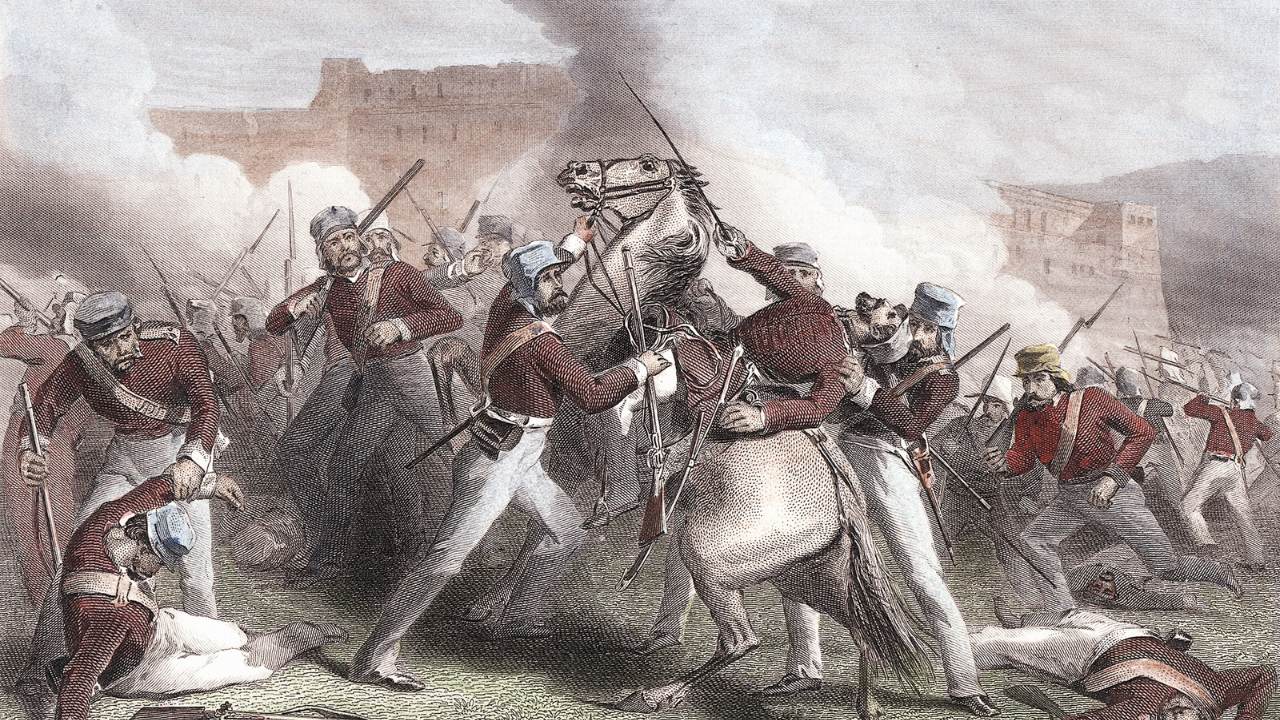
In 1857, a series of rebellions and disturbances broke out against British rule, so that the British East India Company almost lost control of India. The ultimate cause of the Uprising was an anxiety among both Hindus and Muslims that the British wanted to attack their religious practices and impose British values on the subcontinent.
Muslim invaders had been different from the British. They had come to India as foreigners, but then stayed, intermarried with Indians and integrated themselves. Over generations, cultures fused and Muslim dynasties became Indian - certainly, this was how everyone at the time saw the Mughals, who had no distant home that they were looting India for.
The British East India Company was different. Everyone knew their loyalties were with Britain. They had no real legitimacy to govern.
The Uprising began on 10 May in Meerut. Sepoys (soldiers) in the British army mutinied after rumours spread that they would be forced to use cartridges greased with cow tallow and pig lard for their rifles (offensive to both Hindus and Muslims). There is no evidence these rumours were true, but they were believable because over the previous few decades the British had launched a series of attacks on Hindu and Muslim religious practices.
In the early days of the East India Company, the British were usually tolerant and pragmatic. Some officials converted to Islam and Hinduism, and many adopted local habits and clothing. This changed in the nineteenth century when new colonialists arrived from Britain.
In 1813, for the first time, the Company allowed missionaries to promote Christianity. Rumours began to spread that children in orphanages were being converted. In 1829 sati, the Hindu practice of widows burning themselves, was banned. Hundreds of temples, mosques, Islamic schools and Sufi shrines had their endowments confiscated. The British even demolished temples and mosques to build roads.
This was the background behind the Uprising. Rebels marched into Delhi, the last dominion of the Mughal Emperor Bahadur Shah II, who had long been a captive of the British without any power. The mainly Hindu rebels swore allegiance to the Emperor; he had little choice but to support the Uprising.
Mark Thornhill, the British collector in Mathura, was surprised at the Mughal Empire “starting into a sort of phantom life”. He realised “as I never had before the deep impression that the splendour of the ancient court had made on the popular imagination…”. The Emperor proclaimed himself defender of Hindus and Muslims.
Perhaps there is no clearer evidence that the Mughals, in general, were not fanatics who persecuted Hindus. When it came down to it, both Hindus and Muslims saw them as a completely Indian ruling dynasty.
William Dalrymple, The Last Mughal (2006)
Peter Robb, "On the Rebellion of 1857: A Brief History of an Idea." Economic and Political Weekly Vol. 42, No. 19 (May 12-18, 2007)
Vinayak D. Savarkar, The Indian War of Independence (1909)
Feroz Shah, ‘Azamgarh Proclamation’ (1857)
Kim Wagner, The Great Fear of 1857: Rumours, Conspiracies and the Making of the Indian Uprising (2010)